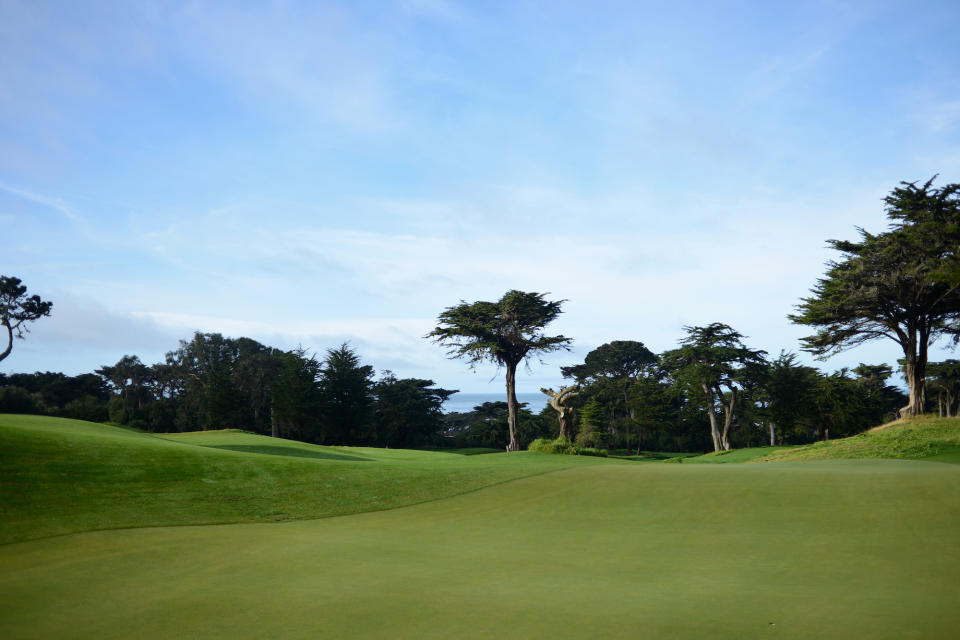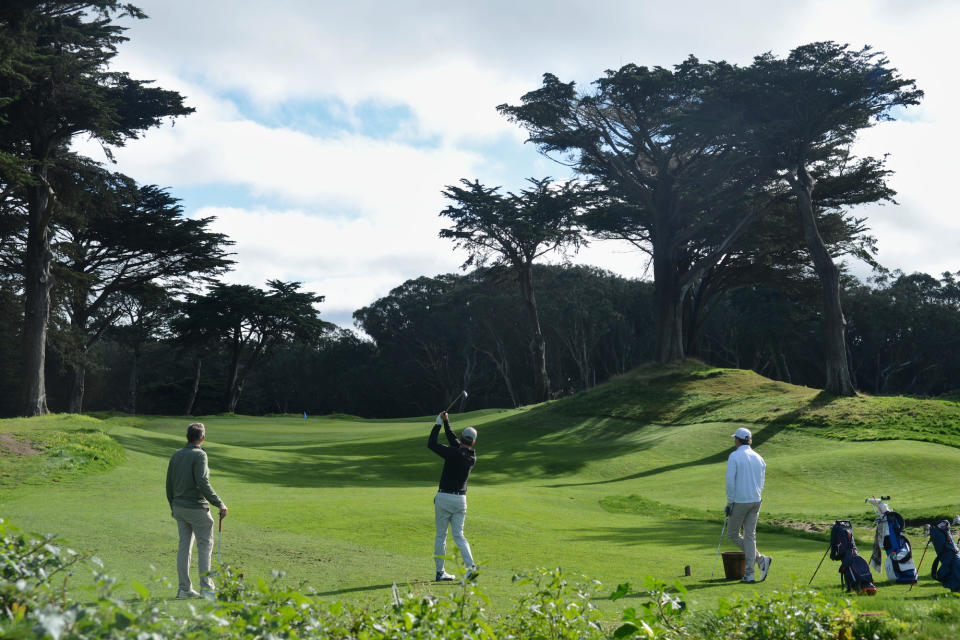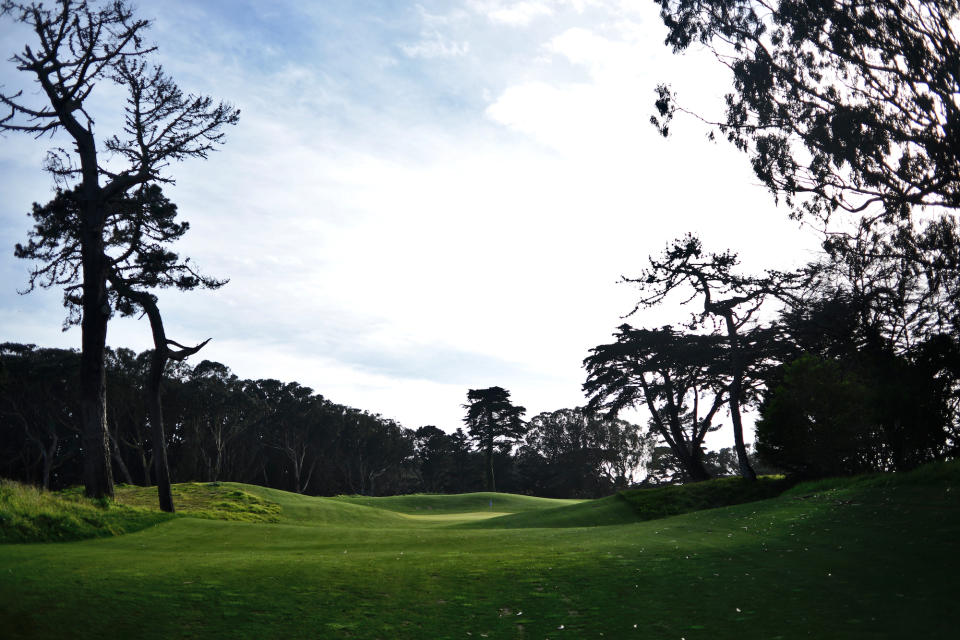Golden Gate Park GC reopens in San Francisco with fresh course, big plans as community asset

Editor’s note: Architect Jay Blasi works with Golfweek as a rater ambassador and contributes occasional stories.
Golden Gate Park Golf Course is what is right about golf. It is accessible, affordable, playable, sustainable and charitable.
Most importantly, it is repeatable. Every city in America, big or small, could have its own version of Golden Gate Park, and our communities and our game would be better off for it.
The course officially reopens Friday, Feb. 16 after The First Tee of San Francisco invested $2.5-million in a 2023 renovation that I had the good fortune to design.
Perched on a small parcel packed with sand dunes and majestic cypress trees just a few hundred yards from the Pacific Ocean, the course is expected to host 40,000+ rounds a year. Highlights and results of the work include each of the following:
Accessible: The course is located in San Francisco, within Golden Gate Park, a few hundred yards from the beach. Golfers can arrive on foot, by bike, by bus or by car. The course is nine holes of par 3s and is an easy walk for all. The clubhouse and practice greens will be open to all and are certain to become a community hub.
Affordable: The course will cost between $20 and $25 for locals or around $40 to $50 for out-of-town guests. Children – including those who participate in First Tee or Youth on Course programs – will pay even less. That’s compared to $75 to $120 at several other top par-3 layouts.
Playable: The tees, fairways and surrounds are all maintained at fairway height, and there are no forced carries. The course plays firm and fast, so balls roll – even topped shots. Players of all skill levels, including first-timers, will be able to enjoy the course. It can be played with just a putter if golfers want to try it.
Sustainable: The smaller footprint and use of fescue turf will make Golden Gate Park Golf Course one of the most efficient users of water and chemicals in the U.S. golf industry. The single height of grass allows the maintenance team to mow the whole facility quickly. The use of only one formal bunker means all raking can be done in one minute.
Charitable: The First Tee makes the course available to its students for practice and play. The kids are learning valuable lessons that will enrich the community for decades to come. By investing in the course and offering an architecturally interesting layout, beginners will get hooked on the game.
Repeatable: Golden Gate Park Golf Course sits on only 20 acres of land. It was designed in a way that the man-hour equivalent of 2.5 employees can maintain the course. The money invested in the course came from wealthy local golfers and corporations that wanted to support underprivileged kids through golf. This formula can work in New York, Dallas, Denver, Seattle and Atlanta. It also can work in smaller towns in every region of the country.
History of Golden Gate Park Golf Course

The course opened in 1951 and was laid out by Jack Fleming, who assisted Alister MacKenzie in the creation of Cypress Point, Pasatiempo, Meadow Club, Sharp Park and other clubs before serving as head greenskeeper for the city of San Francisco courses for 31 years.
Ten years ago The First Tee of San Francisco began leasing the facility from the city, with maintenance still handled by the city. About five years ago the clubhouse burned down, and the city has worked on the construction of a new clubhouse since. That planned clubhouse was scheduled to reopen in October of 2023 and served as a unifying element to what The First Tee had in mind.
In 2023, The First Tee’s lease agreement was up for renewal, and the group decided it would like to continue to lease the property but believed reinvestment was necessary. Under the leadership of CEO Dan Burke, The First Tee of San Francisco privately fundraised $2.5 million to improve the course. The money would go toward a new irrigation system, improved drainage and greater playability for all skill levels. The idea was to renovate the course and have it ready to reopen when the clubhouse was complete in October of 2023.
I had helped Burke and The First Tee with its practice facility at Harding Park in 2020 and volunteered to lead the renovation of Golden Gate Park Golf Course pro bono. My first call was to Josh Lewis of Gradoville & Hertzing Management Group to see if he would serve as project manager, and he jumped at the opportunity and got to work immediately. The city approved the lease agreement and the project on Feb. 15, 2023, and the work started March 6.
Construction of Golden Gate Park Golf Course

The old adage in real estate is location, location, location. In golf construction, it is drainage, drainage, drainage.
Golden Gate Park Golf Course resides on old sand dunes, which are ideal for drainage. So much so that when tested, the results indicated we could build the greens from that sand with no amendments or drainage pipe.
The hard part was getting to the sand. When the course was built, soil was laid on top of the sand. Our biggest challenge of the project was removing that layer of soil, which was usually 6-12 inches deep. Heavy rains in March left numerous machines stuck in the mud and forced us to change where we started our work. After some trial and error, we identified the right machines to scrape away the soil and were down to the sand by April and May.
After we got to the sand, we needed to shape the tees, greens and surrounds. Luckily we were able to attract three talented course shapers (Justin Carlton, Brett Hochstein and Robert Nelson) to help us achieve the playability and aesthetics we were after. By June the course had been shaped, the irrigation was installed and it was time to seed the golf course.
The greens were hand-seeded with a blend of 007XL and MacDonald bent grass, while the tees, fairways and surrounds were hydroseeded with a blend of fine fescue. The out-of-play areas were hydroseeded with a different fescue blend. Josh Lewis handled the grow-in of the facility, and his extensive experience with fescue turf from his stints at Bandon Trails in Oregon and Chambers Bay in Washington served us well.
By October the course was playable while still maturing. From October to January the course continued to grow-in, and Josh handed over the maintenance operation to the city.
Design and maintenance overview

The golf course had served the community well for decades. And the bones of the course were very good. However, there were numerous design elements we wanted to address.
First was the routing. When the course first opened in 1951, it started on the north end of the property and finished at the south end. At some point an operator changed the sequence to start and finish in the middle of the site. By returning the sequence to the original routing, we could take golfers on a better journey across the property.
There was only one set of tees on the course, and each teeing ground was about 20-foot by 20-foot, small enough that it was easily beat up and stayed that way throughout the year. We believed we should provide multiple tees on each hole so players of different abilities could enjoy the course. We chose to create long “ribbon tees” that flow into the fairways so the course operators can move markers to numerous spots on each hole. This will provide different options to players and spread out the wear and tear.
The green complexes were another area we felt we could improve significantly. Over time, the greens had shrunk to roughly 2,500-square-foot circles pitched from back to front – very small by modern standards. We wanted to provide larger surfaces with interesting contours to allow for more hole locations with fun sideboards and kicker slopes, and to spread out the wear patterns.
Finally, we wanted the course to reflect the unique setting within the park so close to the beach. We chose to eliminate six of the seven bunkers on the course and instead crafted several big sandscapes in out-of-play areas between holes. The new sandscapes provide a bold visual element, but they don’t impact play much while the reduction of bunkers allows for more room to play golf and fewer forced carries.
In addition to the design goals, we wanted to address a couple key maintenance topics. The first was the trees. Over the decades numerous trees and shrubs had been planted, original trees had grown much larger and the corridors had shrunk significantly. We wanted to remove any non-native vegetation; any trees that were dead, dying or dangerous; and prune back any trees adversely impacting maintenance.
By opening up the property, golfers have more room to play and the turf has far better sunlight and air circulation. Golfers can now enjoy views of the ocean as well as the city at multiple spots throughout the round.
The other maintenance area to address was turf height. The old course had been maintained at rough height of plus-or-minus 2 inches from tee to green. That meant any shot that was topped or didn’t fly to the green just stopped. The ground was often soft and wet, and for beginners it was tough. We wanted the entire facility to be maintained at fairway height so a ball will roll. Now golfers can play the ball on the ground and make use of exciting contours that dance across the property.
Hole by hole at Golden Gate Park Golf Course

No. 1, 95-137 yards: The hole plays from the clubhouse area uphill about 25 feet. The fairway is a bit of a saddle between dunes with tall trees on both sides. There is a large multi-trunk cypress tree behind the green. During the renovation the teeing ground was expanded, and a sandscape was exposed right of the tees. Numerous trees were removed or pruned to provide more room to play and improved turf conditions. A new double-green (combined with No. 4) is deep with helping contours on the left. To the right of the green, an old tree stump remains that the team refers to as Sandy’s Stump in honor of the late Sandy Tatum, the founder of The First Tee of San Francisco.
No. 2, 90-114 yards: The hole plays from the high point on the property then downhill about 20 feet into a grove of mature trees. A large cypress tree frames the left side of the green. The teeing ground was expanded and combined with the tees on Nos. 5 and 7. A bunker short of the green was removed so players can choose to putt down the hill on this hole if they desire. A chain-link fence behind the green was removed, and the green was expanded back. The new green is roughly three times the size of the original with a lower-right portion, a diagonal spine in the middle and a lower back-left section. A sandscape was exposed behind the green that catches balls before they reach the woods.
No. 3, 81-126 yards: The third hole is nestled down in a valley on the backside of the main dune. The hole plays from south to north with a large hillside left of the green. The hole was shortened to make room for the expanded second green and to improve safety. Dozens of dead trees were removed from the left side while large eucalyptus trees were pruned along the right. The green was elongated with a skinny front section as well as a small area tucked behind the dune on the left. The approach was softened to allow for shots along the ground.
No. 4, 75-115 yards: This hole sends players back up to the high point of the property. The hole plays uphill about 10-15 feet from north to south to a green that sits in a large amphitheater setting. Numerous dead trees were removed left of the hole, and trees on the right were pruned. The green complex was combined with No. 1. The green is a giant punchbowl with a spine in the middle to create a left bowl and a right bowl.
No. 5, 97–153 yards: The fifth used to be played as the ninth. It was the longest hole on the course, playing 35 feet downhill to the clubhouse. It was set in a very narrow corridor. During the renovation the hole was shortened, moving the green east and away from the clubhouse for safety reasons. Shifting the green and shortening the hole allowed for the addition of a practice putting green off the clubhouse patio. Trees on both sides of the hole were removed or pruned, opening up views of the Pacific Ocean, the Cliff House, the windmill and the golf course. The green now sits at the base of a strong roll in the fairway, so any shot clearing the roll will release onto the surface. A sandscape between No. 5 green and No. 1 tee protects shots that go long and offers a sense of place.
No. 6, 80-130 yards: The sixth was the starting hole before the renovation. It plays uphill about 30 feet to a green at the base of a larger hill, and it may have been the biggest transformation on the course during the renovation. The teeing ground was expanded forward and back, and a chain-link fence right of the tees was removed. A wall of shrubs left and behind the green were removed, and a giant sand dune was exposed. A bunker in front of the green was removed while some smaller sandscapes were opened at the tees to provide a backdrop for No. 8 and to play with the depth perception of the hole. Given the longer and uphill shot, the new green is three times the size of the old green and pitches from back to front. A big kicker slope behind the green can be used as well.
No. 7, 84-132 yards: The seventh plays west down the hill towards the Pacific Ocean. The green is situated in another amphitheater that overall tips from left to right. The tees were expanded and combined with Nos. 5 and 2. Trees on both sides were removed or pruned. A new boomerang green was constructed with the lone formal bunker on the course framing the right side of the green, or the center of the boomerang. Strong sideboards and kickers around the green will allow for players to get to the hole in a variety of ways.
No. 8, 52-95 yards: The eighth is the shortest hole on the course, playing less than 100 yards from the tips. The hole drops downhill about 15 feet and can be played with a putter. A tall cypress tree frames the right side of the approach while the left side is anchored by a large, wide and squatty cypress tree. Forward tees were added, stair-stepping down the hill. The areas right and behind the green were opened as a large sandscape. The green was lowered and widened, with interesting contours crafted throughout. A large bump short of the green was added to help players who putt from the tee.
No. 9, 102-160 yards: The final hole plays back north to the clubhouse and parking area. The ninth is one of the longest holes and plays through a corridor of mature cypress trees to a tabletop green with a strong hillside short right. The tees were elongated so the hole can play anywhere from 100-180 yards depending on hole location. The tees offer different angles, as well. Two bunkers short of the green were removed. A deep sandscape was added left of the tees for aesthetic purposes. The green complex has a deep sandscape behind to protect balls from going toward the parking lot.
